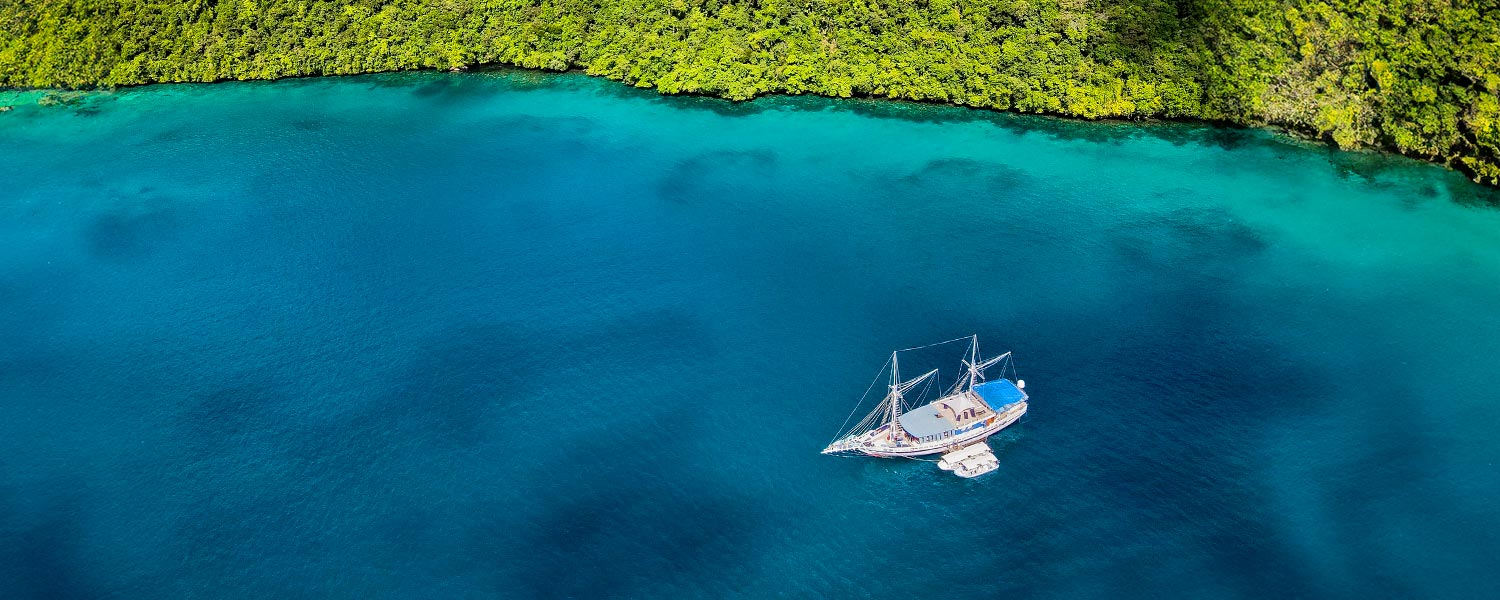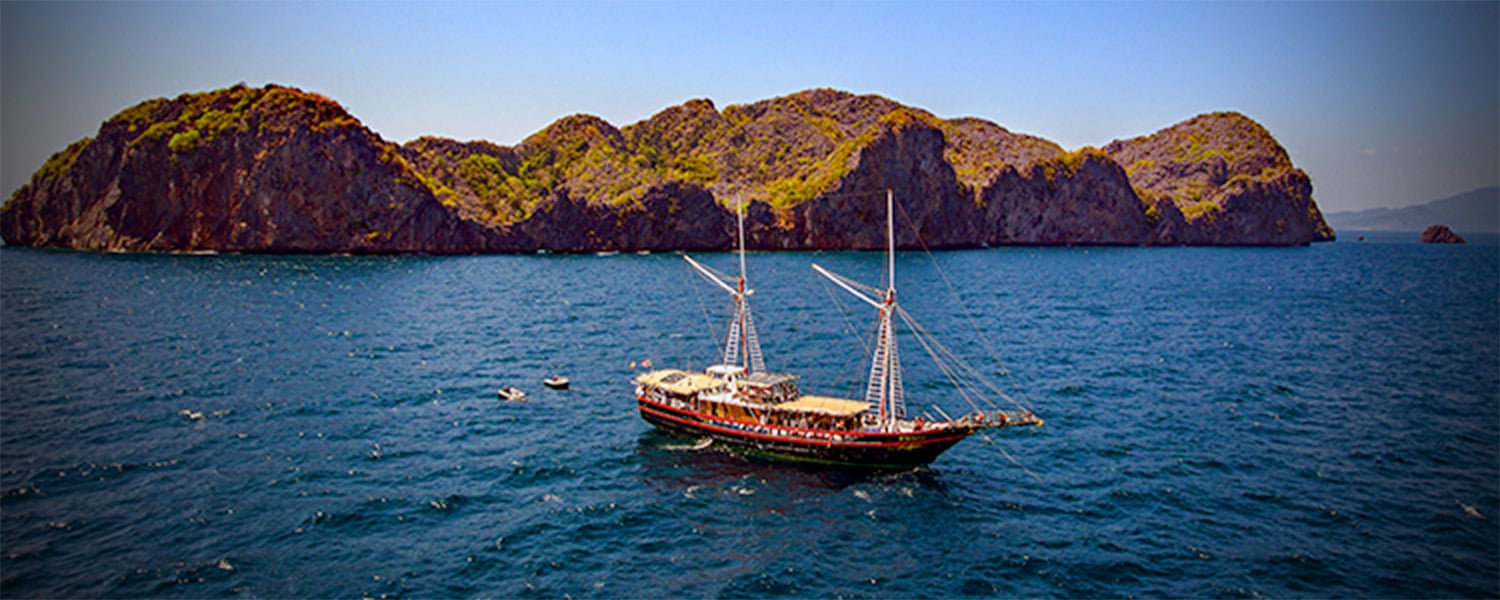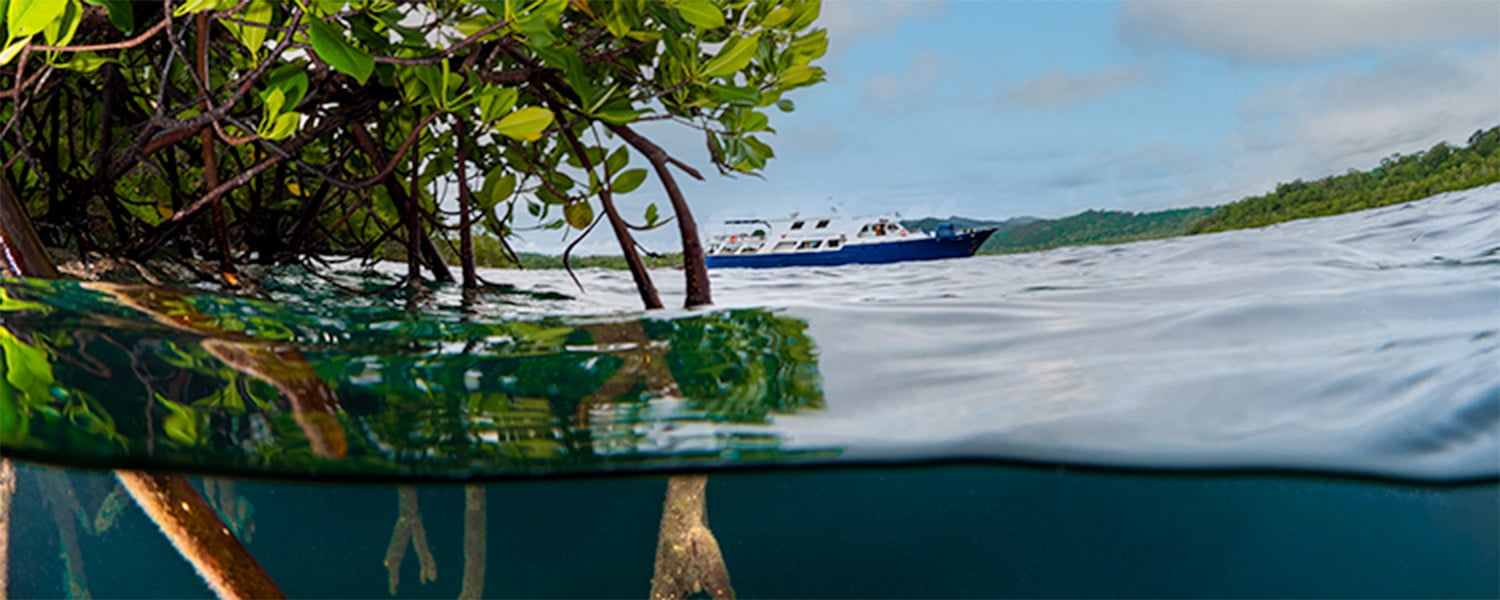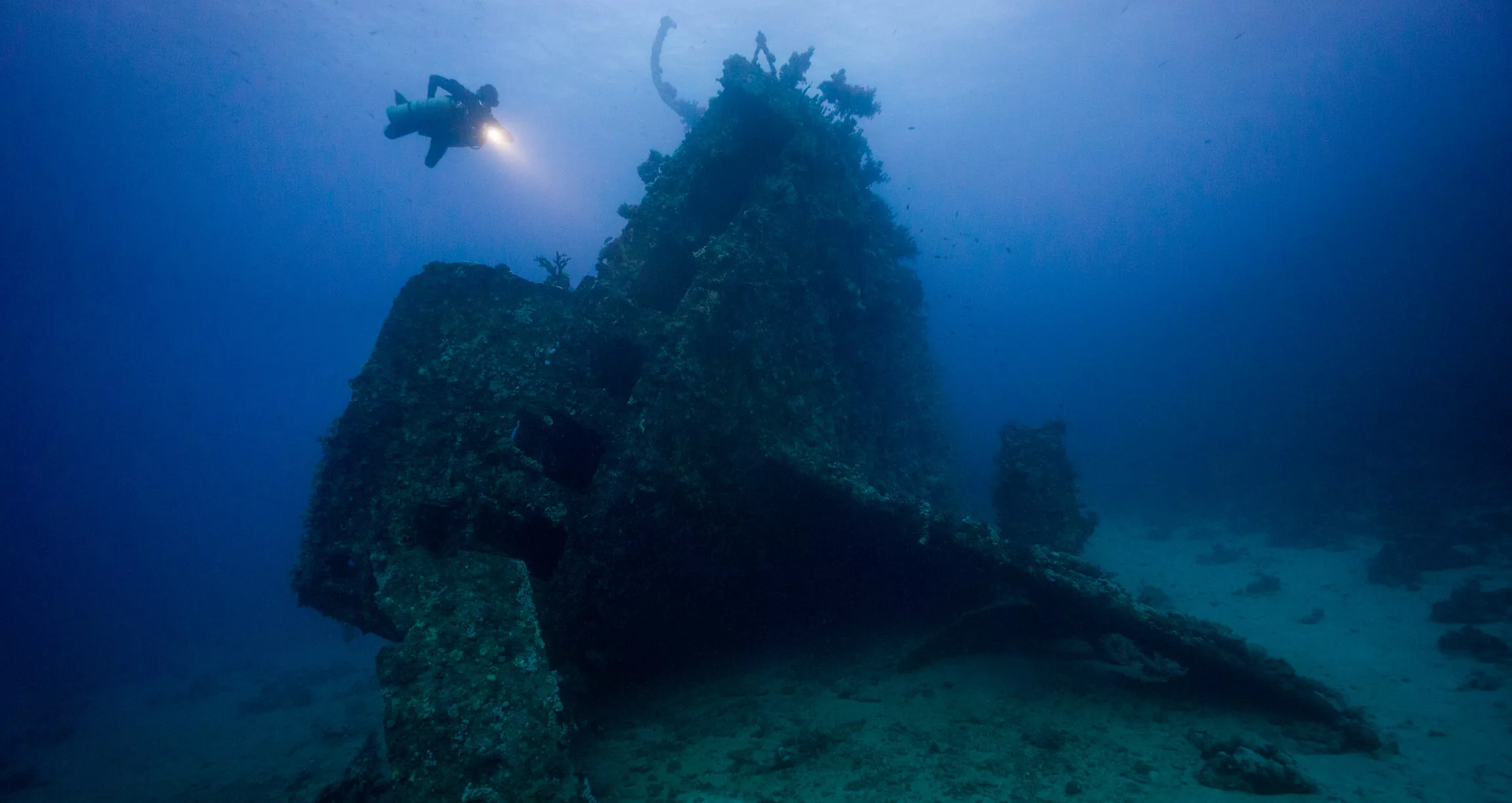It was a big manta, one of four that had been flying in large circles around the divers. I had hunkered down in a valley in the lava field behind the rest of the group and here it came, right over the top of me, not even two meters away. What a neat experience. But only one of many during a 10 day trip in Indonesia. Komodo really gave us everything from manta rays to mantis shrimp.
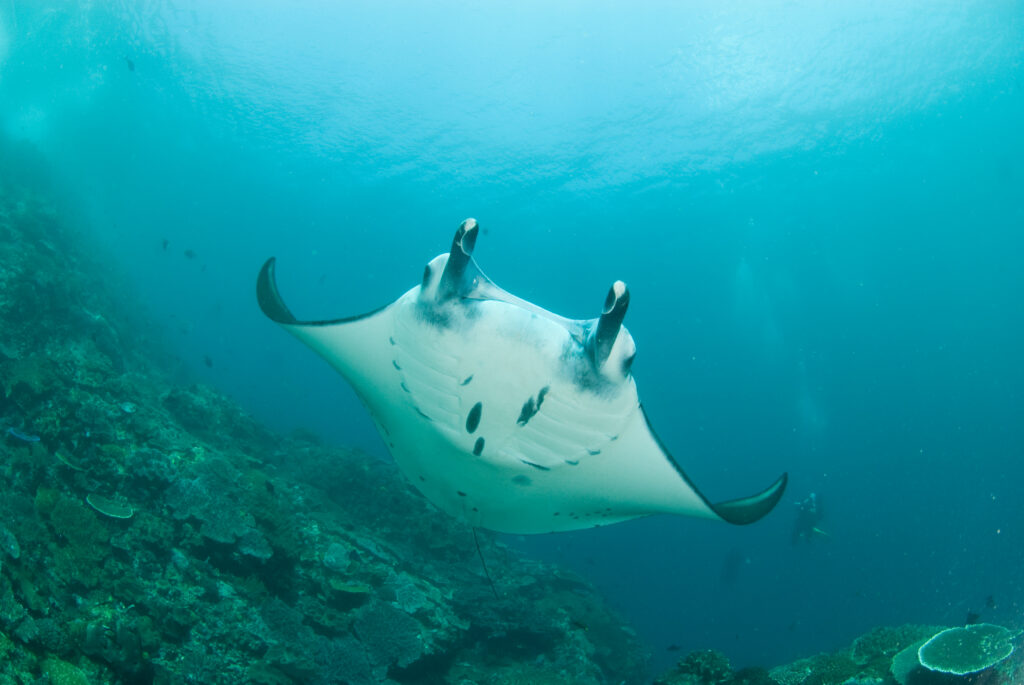
The start
A group of 15 from Scuba Travel Ventures, based in San Diego, had left Los Angeles. We made the trip across the Pacific to dive in Indonesia with Indo Siren. None of us had dived with this company previously, and it was a great experience.
The boat is built from local ironwood, in a traditional Indonesian boat yard. It is beautifully finished, with polished mahogany throughout the boat and smooth teak decks. The crew was most attentive and well trained, the food was great, and the pace of the trip was relaxing.
Through the course of the ten days, we experienced the most diverse dive experiences that I have ever seen on a single trip.
The northern part
The north end of Komodo, at the beginning and end of the trip, had warm water at around 28 degrees Celsius. The warmer sea was green and full of plankton, and all of the associated filter feeders and macro photographic opportunities of Indonesian muck diving.
Then, as we moved further south, the water became cooler and more blue, with the critters becoming larger and more pelagic.
During much of the trip we were diving over and around “black sand” created from volcanic activity. In the areas where we found it, the black sand covered the flat areas, with small corals appearing upon it. When disturbed it would run downward in small rivers.

Further south
The further south we moved, the faster the current flowed. Pinnacles, created from volcanic up thrusts, were washed by strong currents and created yet another diving venue; full of schooling jacks and masses of reef fish. During an early morning dive at “Cannibal Rock,” we came across several white tip reef sharks. Most appeared to be very pregnant.
We were diving “Manta Alley” at the far south end of Komodo Island, Indonesia, on day five of a ten day trip. The water was blue with 30+ meter visibility and a temperature of 25 degrees Celsius.
And everything in-between
For me, the most extreme and exhilarating dive of the trip was “Roller Coaster.” As we dived along a wall leading to a point, two currents crashed together. We were told that at times there was a whirlpool on the surface. But at 30 meters, we sped along the wall, as fast as I have ever gone underwater. Right at the point, I was rolled over and over at least three times before coming out on the other side of the point and eventually into calmer, slow moving water.
As we moved into the shallower flat, just inside of the lip of the wall, one of the other divers motioned me over to see a small sea snake. It was the first that I had ever seen. It was methodically hunting under rocks and overhangs, and was uninterested in the three of us who were quite close, watching.
Especially the mantis shrimp
Moving north again, we did our second stop at a dive site named “Circus”. It gets its name from the numbers of lion fish that are around the site, but here is also the place that several divers found a mimic octopus. On a flat, near the edge of the dive area, my dive buddy, Bill Sarro, found a large Mantis Shrimp, completely out of its den. He had the right lens on at the right time, and got a great photo of the full Mantis, a rare treat!

Later, during the twilight dive, one of the dive guides called me over and pointed out a lion fish. I thought that a bit strange, since we had seen several on most dives. I began photographing it, and then, after taking several pictures of the lion fish, realized that the big lump of sponge next to the lion fish really wasn’t sponge, but a huge peach colored frog fish. It’s camouflage was so good that I was swimming all around it and almost missed it completely.
To finish off
During the last two days of the trip, as we once again reached the north end of Komodo. The water was once again warm, and green with plankton. The critters grew smaller, and we switched to close up lenses. Every dive produced new and varied species of nudibranchs, including some of the most colorful that I have seen, anywhere.
And the land?
In addition to the spectacular diving, another group of experiences are not to be missed, Komodo Dragons.
Early on the fourth morning, we headed to shore. Komodo National Park is a World Heritage Site, and home to the famous Komodo Dragons. Komodo Dragons are very large lizards, endemic only to Komodo and a few surrounding islands. They are carnivores, and stories of them stalking humans are common.
We met two guides who led us on a hike through the park. I was surprised at how hilly and dry the area is. I had expected much more of a rain forest environment, but such is not the case. We found several dragons during the hike. The guides used long sticks that they carried with them to herd the dragons away from our group.
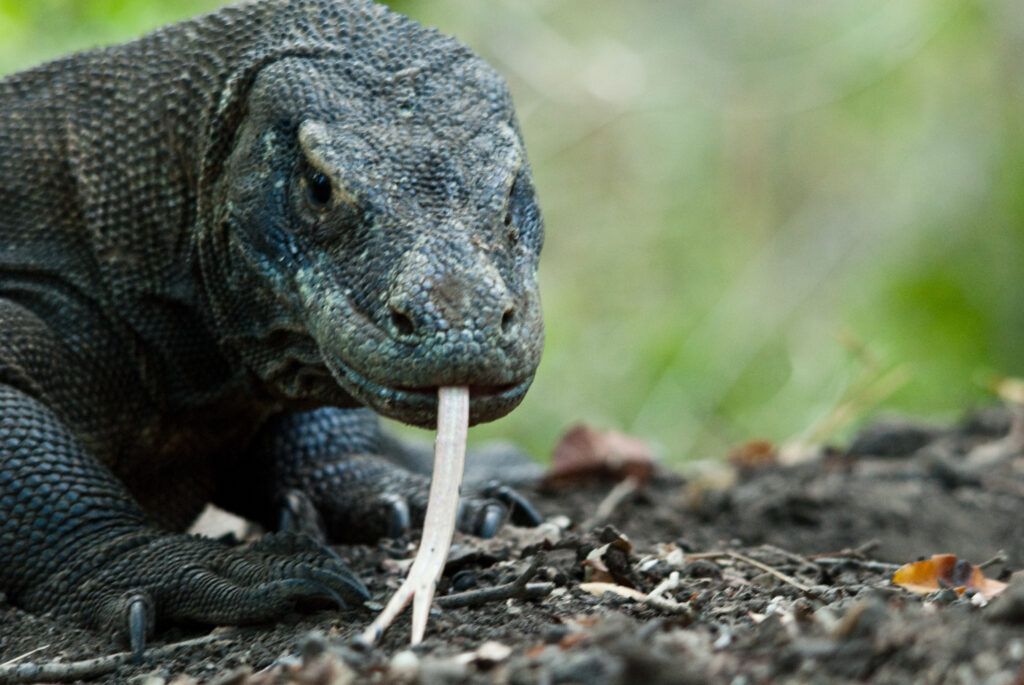
Bye bye
Back at the airport, we bid our goodbyes and climbed on the plane. It was a short hop over to Bali for two additional days on that gentle island before the long flight back home.
Without a doubt, I will go back. The diving was certainly the most diverse that I have ever experienced. We truly saw manta rays to mantis shrimp and everything in-between. I am quite sure that I have only scratched the surface of what is possible in this underwater Mecca.
We are thankful again to Sandy Sondrol for his amazing article “Manta rays to mantis shrimp” from his trip in Indonesia with Master Liveaboards.
Raised beside a lake in Iowa, Sandy Sondrol grew up a self-described “water rat,” and made his first dives in the mid-1960s. In 1994, he left his law practice and moved to Grand Cayman to become a dive instructor and boat captain for Bob Soto’s. After nearly 10 years in Cayman, it was back to the states to join Nekton live-aboards for three years. He later became the associate publisher of Dive Chronicles, and today works as a full-time freelance writer and photographer. He holds a USCG 500-ton captain’s license with 4,000-plus days at sea and is a PADI Master Scuba Diver Trainer with nine specialties and more than 4,500 dives. You can see more of his work here.
